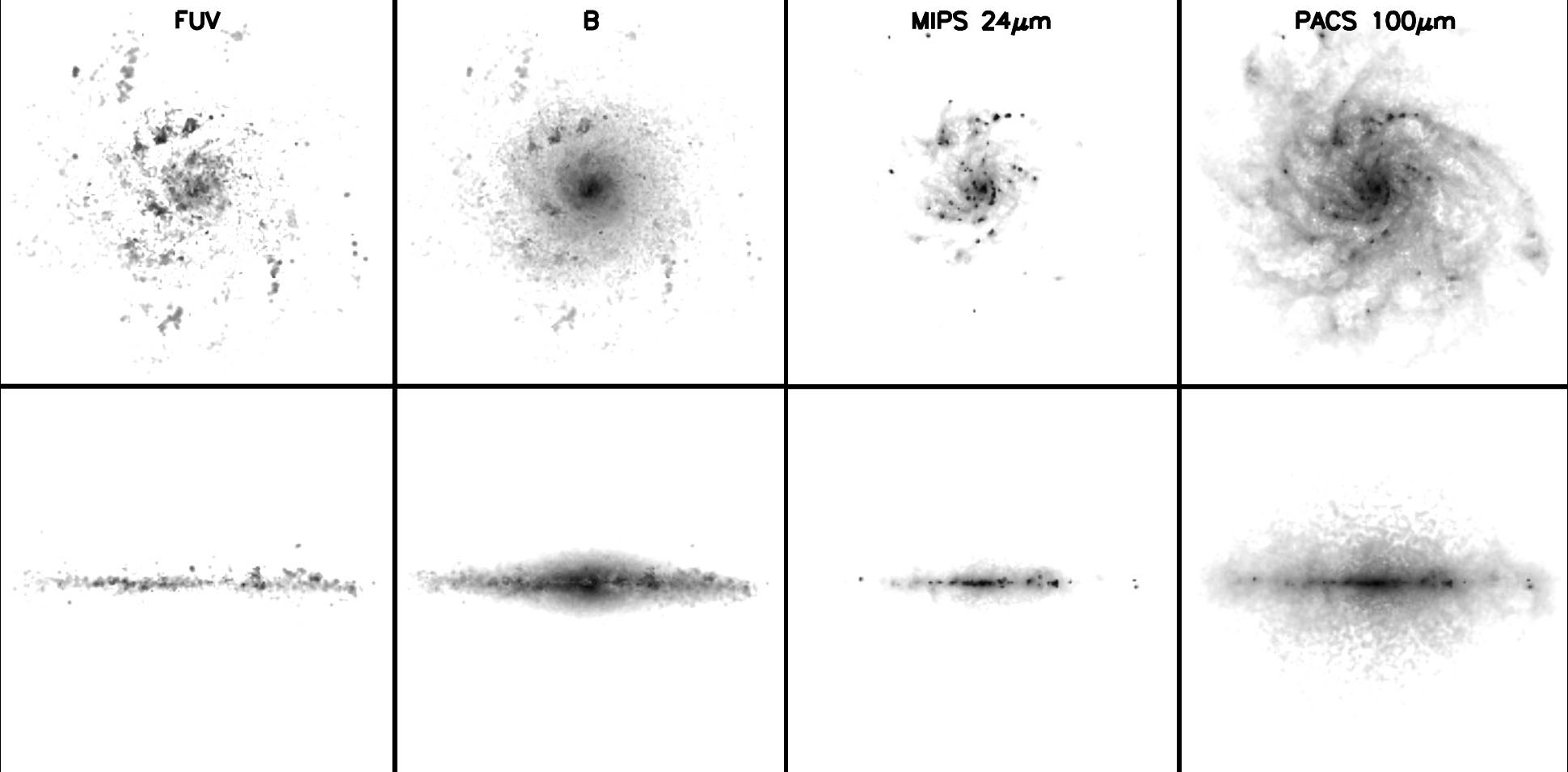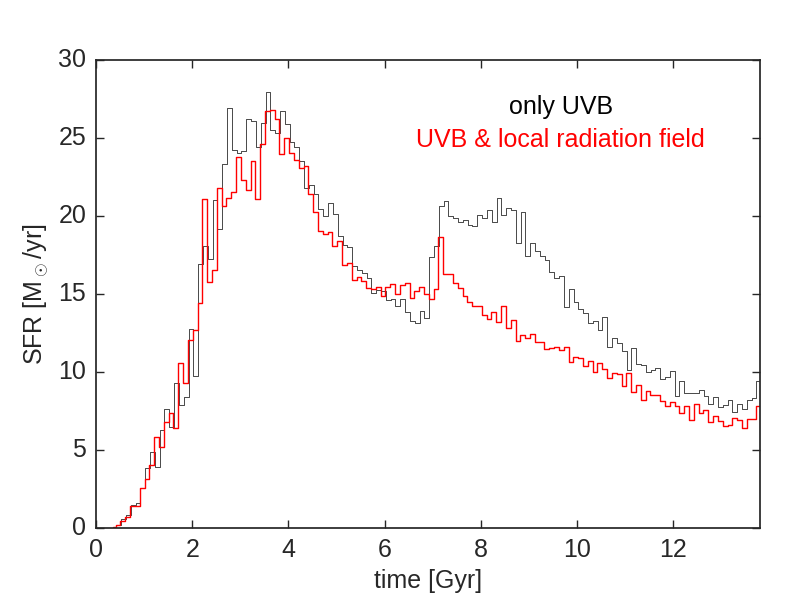
Aura Obreja
Post-doc researcher
gsf is a Python/Fortran-OpenMP code that identifies dynamical structures (e.g., thin/thick disks, bulges, stellar halos) in relaxed simulated galaxies (Obreja et al. 2018). The code employs the open source library scikit-learn to search for clusters in a 3D space of stellar dynamical variables. The next step is to fully automatize gsf such that it can choose the optimal number of structures/clusters without any user input.
The first version of gsf is available here.
I have implemented the imaging mode for GRASIL-3D, including the post-processing code that takes into account the redshift and outputs spectral energy distributions and images in bands ranging from GALEX/FUV to Herschel/SPIRE. GRASIL-3D is a radiative transfer grid code written in Fortran/MPI, which couples the dust models in GRASIL with the output of cosmological simulations.
 GRASIL-3D applied to a
MaGICC galaxy
GRASIL-3D applied to a
MaGICC galaxy
In recent years I have been using the N-body SPH code Gasoline2 to run zoom-in cosmological simulations of galaxies. Currently, I am working on an implementation for this code of the local radiation field effects on the gas in galaxies.
 A massive NIHAO galaxy with and without local radiation field feedback (Obreja et al. in prep.)
A massive NIHAO galaxy with and without local radiation field feedback (Obreja et al. in prep.)


 gsf applied to a
gsf applied to a